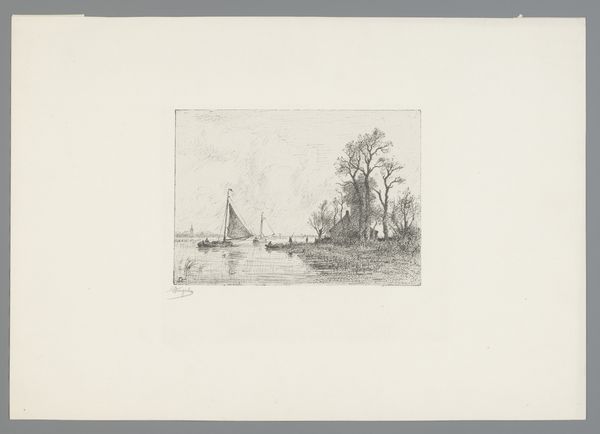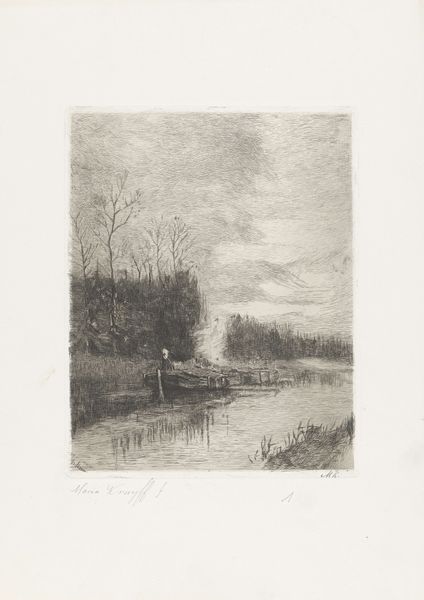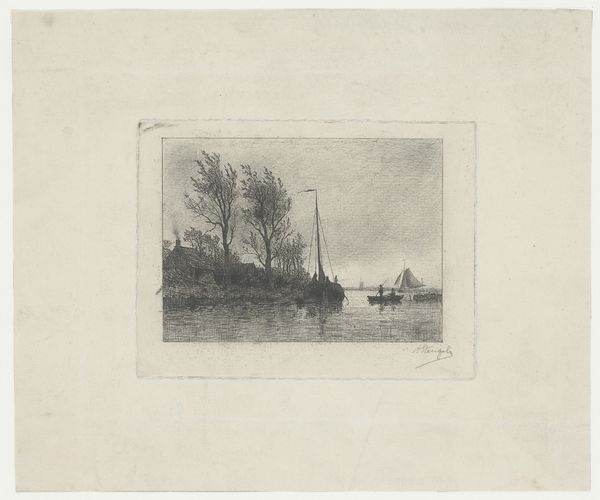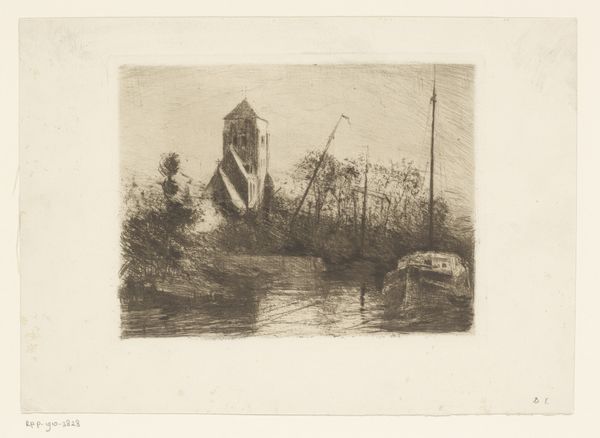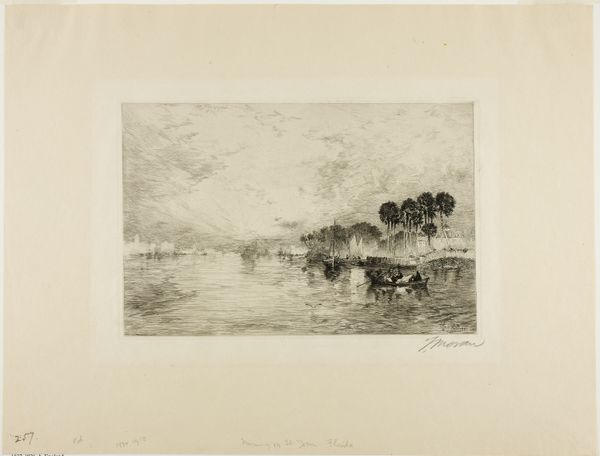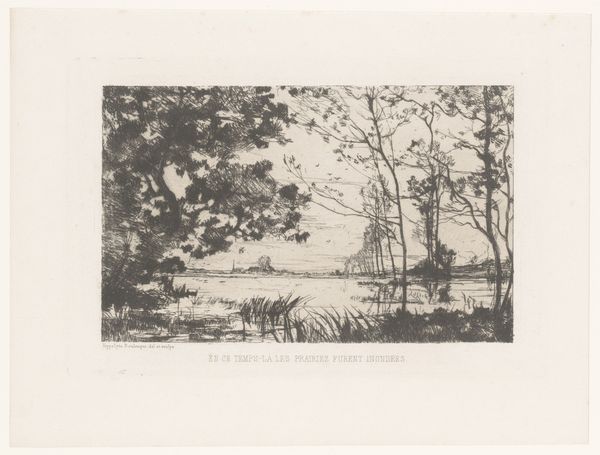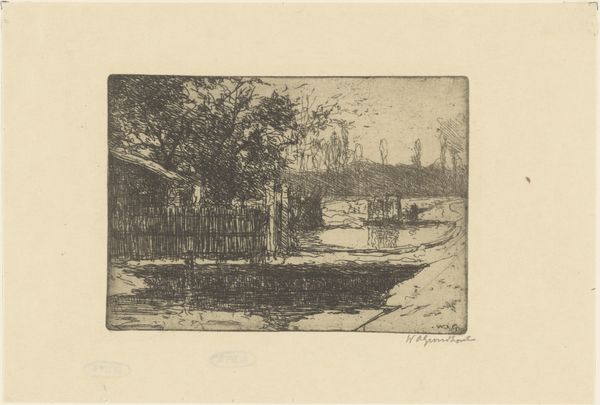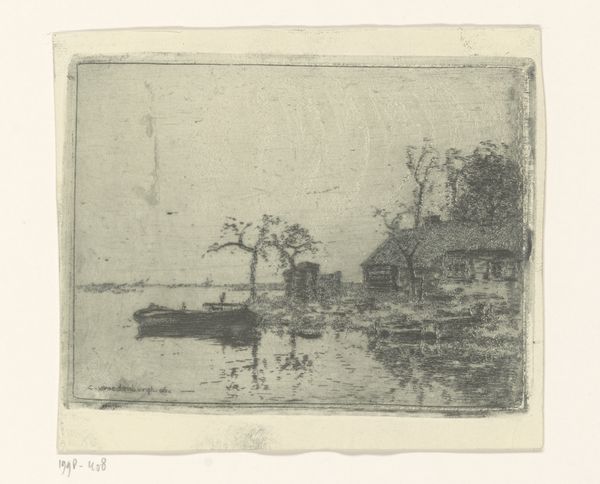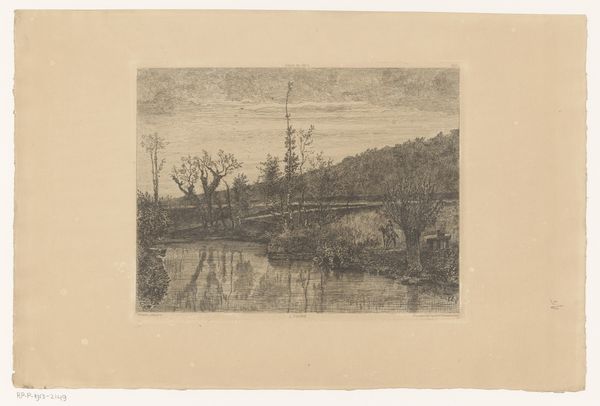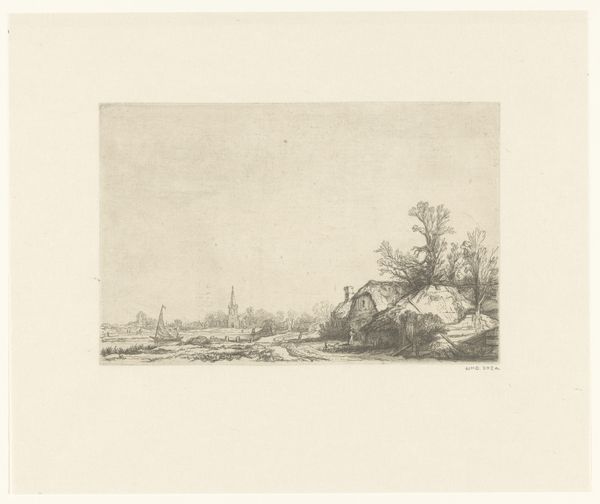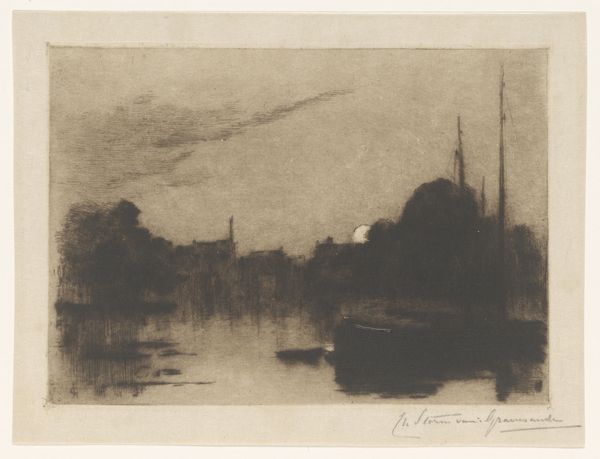
Dimensions: height 315 mm, width 450 mm
Copyright: Rijks Museum: Open Domain
Alphonse Stengelin made this print of ships on the river Maas, with a windmill in the background, using etching. The print seems to capture a very specific moment in the economic and social history of the Netherlands. Windmills had long been a fixture of the Dutch landscape. But the introduction of steam power in the 19th century marked a shift in how the Dutch people used the land and sea for trade and transportation. This shift may be why Stengelin chose to depict the older and newer technologies side by side. The print also demonstrates the importance of institutions like the Pulchri Studio in the Hague, of which Stengelin was a member. It encouraged artists to create realistic, modern, and recognizably Dutch scenes. Ultimately, understanding the visual culture of the Netherlands in the late 19th century allows us to understand the rich and complex history of this seemingly simple print. A deeper study of the shipping industry and art market of the Netherlands at this time would help us better understand this image.
Comments
No comments
Be the first to comment and join the conversation on the ultimate creative platform.
